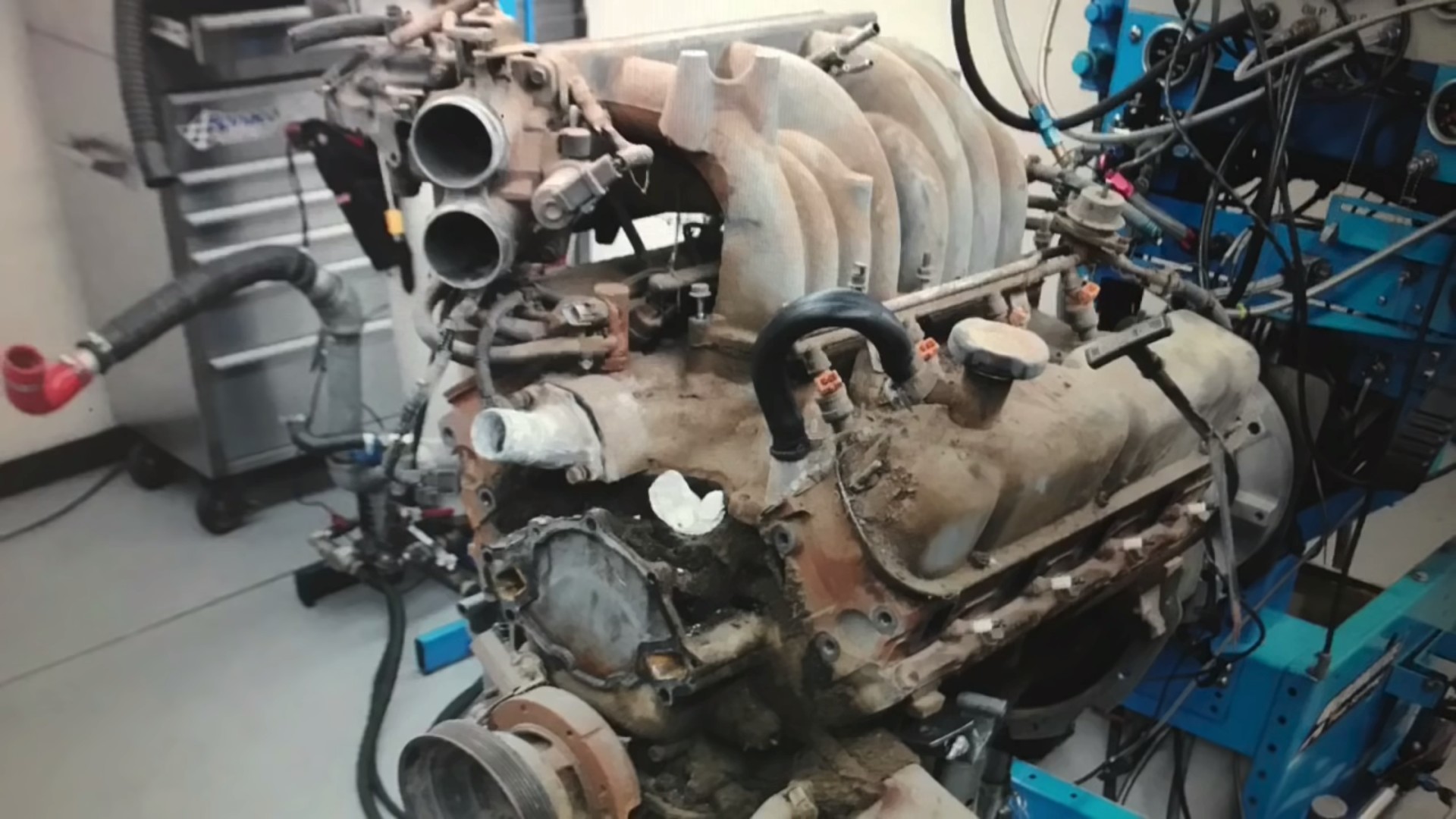

Plucking an engine from a junkyard derelict and tuning it to make absurd power is one of America’s favorite pastimes, at least when you look back on the hot-rodders of yesteryear. There are still gearheads out there doing that today, though, and they’re able to squeeze absolutely massive twist from old-school lumps that thought they’d never see the road again. That’s especially true of the Ford 351 Windsor, which has long been loved for its tunability and relative reliability. But have you ever seen one with a stock block make four-digit horsepower?
It’s possible—just ask pro engine builder Richard Holdener. He was able to source a tossed 351 Windsor and fit a handful of upgrades to it, producing power that’s more in line with modern LS engines than a 20-plus-year-old truck motor.

The engine build started the same way that many of Holdener’s do on his YouTube channel. He added ring gap, fitted Airflow Research 205 heads, a larger cam, a Trickflow Intake, and 90-pound injectors to bring the baseline up a respectable amount. Running Holley HP EFI management, sans turbos, the 351 Windsor dyno’d at 409 horsepower and about 405 pound-feet of torque. That’s pretty stout, but nothing to shout from the mountaintop.
Holdener explained that a different cam could’ve helped those numbers out, if ever so slightly, but now it’s time to add boost.
A pair of 76-millimeter CX Racing turbos was fitted shortly after and plumbed to a twin-core, air-to-water intercooler. Holdener cranked the boost gradually to see exactly how much power each setting made, utilizing 118-octane race fuel to undo any worries about detonation.

The first mark was impressive, especially considering the modest 7.4 psi of boost that was fed to the V8. Power peaked at 630 hp and a little over 600 pound-feet of torque, representing a roughly 65-percent increase in horsepower alone from the non-boosted bolt-on setup. This was only the start.

By nudging the boost up to 12.5 psi, output climbed to 790 hp and crossed over at near-equal torque. That’s almost double the power of the naturally aspirated baseline, which was already a significant step up over the 351’s stock rating.

Right about here is when the going gets crazy with a rod-rocking 21.3 psi being force-fed into the engine. That’s all it needed to cross the four-digit threshold, on to 1,023 hp. Peak power comes on around 5,500 rpm, which is admittedly high but not all that unreasonable in drag racing applications. After all, it’s far past the point of reasonable truck towing power and into the realm of Fox-body Mustangs now. The main point of worry is all that torque, which is starting to affect that stock bottom end.
Still, it’s far from over.

As it turns out, 1,047 hp was this 351’s zenith. While a touch of tuning could’ve smoothed the curve out, it began running rich past 5,000 rpm, at which point it had already made top power. Still, not too shabby for an old F-150 engine that was introduced in 1969.
After this, Holdener explained that he ran out of manual turbo wastegate adjustment. This didn’t stop him from pressing on, though, as he worked to control boost with the throttle, rolling on the power gradually as the engine built revs. That approach worked for a spell, but things quickly went wrong when all the boost came on at once, applying loads of torque to the connecting rods and forcing them to grenade.

This resulted in fatal carnage for the 351, but it lived a good life on its way to hypercar-like horsepower. Depending on the application, this is enough to dip far below the 10-second quarter-mile mark, landing the once-humble pickup motor in pretty good company amongst your local drag strip’s elite.
Got a tip? Send us a note: tips@thedrive.com